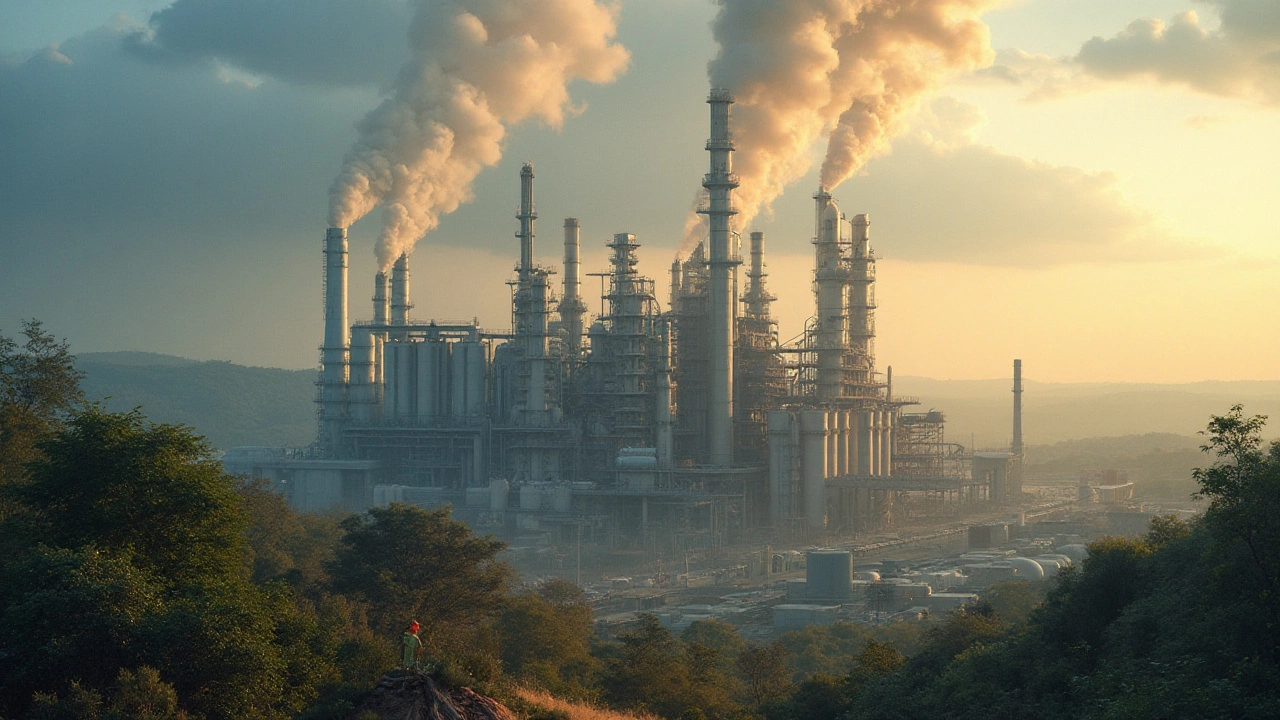What Makes Indian Chemical Manufacturers Tick?
India’s chemical scene is buzzing with activity. From bulk petro‑chemicals to specialty pharma ingredients, the country produces everything that keeps factories, farms, and households running. If you’re wondering why the sector feels so alive, the answer lies in three simple facts: cheap raw material links, a massive domestic market, and a government that’s pushing for self‑reliance.
Big Drivers Behind the Boom
First off, raw material costs. India sits on huge reserves of natural gas and crude, which translates into cheaper feedstock for manufacturers. That advantage lets companies price their products competitively, especially when they export to regions where energy is pricey.
Second, the home market is huge. Over 1.3 billion people need everything from fertilizers to disinfectants, so demand stays high even when export windows shrink. Companies that can tune their production lines to meet local needs – think more pesticide blends for farmers or affordable personal‑care chemicals – see steady sales.
Third, policy support matters. Initiatives like Production‑Linked Incentive (PLI) schemes and the “Make in India” push give manufacturers tax breaks and easier access to land. Those incentives are especially attractive for firms looking to set up new plants or expand existing ones.
Challenges You Can’t Ignore
Nothing grows without obstacles. The biggest headache for many chemical makers is regulatory compliance. Rules around emissions, waste disposal, and worker safety are tightening, and non‑compliance can shut down a plant overnight. Staying ahead means investing in cleaner tech – a cost that smaller players sometimes struggle with.
Another snag is the talent gap. Skilled chemists, process engineers, and quality controllers are in short supply, driving up salaries. Companies that partner with local technical institutes or run apprenticeship programs often find a better talent pipeline.
Lastly, supply‑chain hiccups can bite. Global logistics disruptions have shown how dependent Indian manufacturers are on imported catalysts and specialty additives. Building local alternatives is a long‑term fix, but it requires R&D spend that not every firm can afford.
So, what’s the way forward? Focus on efficiency, sustainability, and niche markets. Lean manufacturing practices – like cutting the seven wastes of production – can shave costs without sacrificing output. Investing in greener processes not only meets regulations but also opens doors to premium markets that value eco‑friendly chemicals. And instead of competing on volume alone, many firms are carving out specialty segments such as bio‑based polymers or custom pharma APIs, where margins are higher.
If you’re scouting for a partner or thinking about entering the sector, look for companies that blend solid domestic footprints with a clear roadmap for sustainability. Those are the players that will thrive as India pushes for greater self‑sufficiency and as global buyers seek reliable, compliant suppliers.
In short, Indian chemical manufacturers have the raw material advantage, a massive market, and growing policy support. Overcoming regulatory, talent, and supply‑chain hurdles with smart investments will keep the sector on a strong growth path for years to come.

India's Chemical Industry: Leading the Global Charge
India's chemical industry is gaining momentum, challenging traditional leaders like Germany and the United States. This sector accounts for a substantial portion of the national economy and is celebrated for its innovative technologies and sustainable practices. With a growing demand for chemicals worldwide, India's strategic focus on research and development positions it as a top contender. Explore how this vibrant industry is reshaping the global market landscape.

Banned Chemicals in India: What You Need to Know
India has taken significant steps to regulate the use of hazardous chemicals that pose environmental and health risks. This article explores which chemicals are currently banned in the country, providing insights into why certain substances were deemed unsafe and how these bans impact the chemical industry. We also delve into the challenges faced by manufacturers and tips for staying compliant with regulations. Learn about the critical legislation and what it means for both the environment and public health.

The Dominance of Sulfuric Acid: King of the Chemical World in India
In the bustling landscape of India's chemical industry, sulfuric acid has earned a regal status as the 'King of Chemicals.' This versatile compound is a cornerstone for numerous applications, ranging from fertilization to industrial cleaning. Understanding its pivotal role in manufacturing and infrastructure helps to appreciate the breadth of its influence. The article delves into its significance, production, and its impact on the economy.


